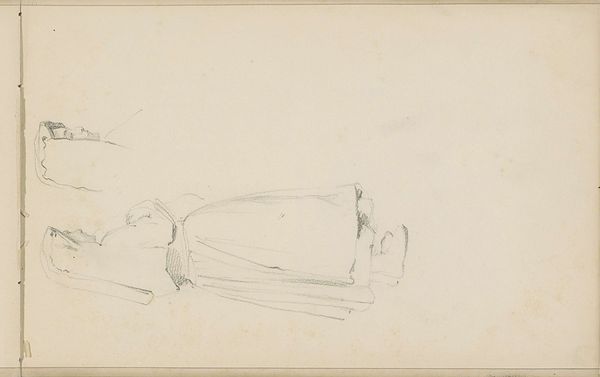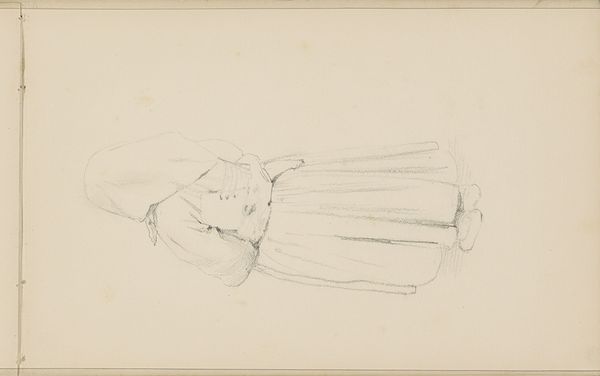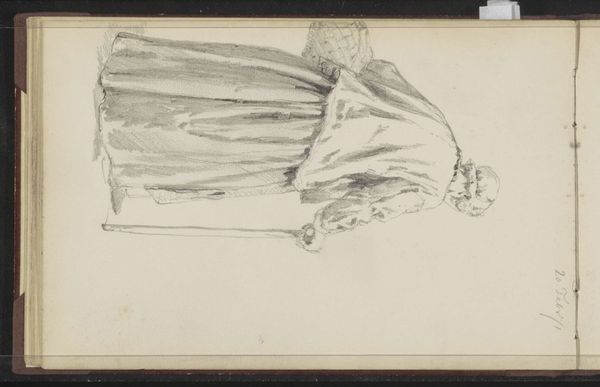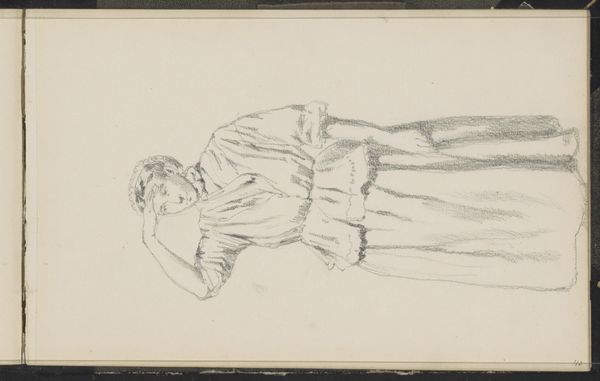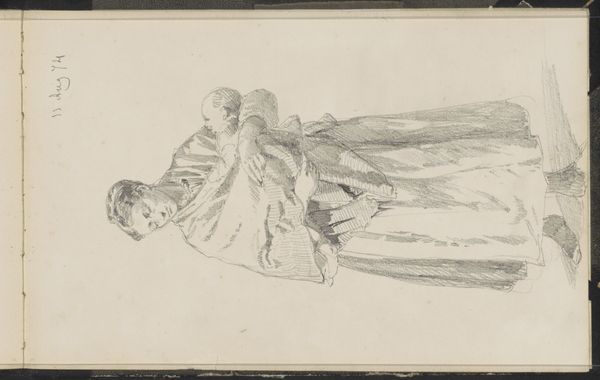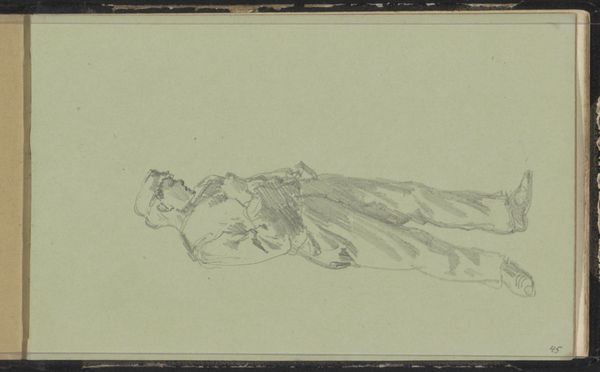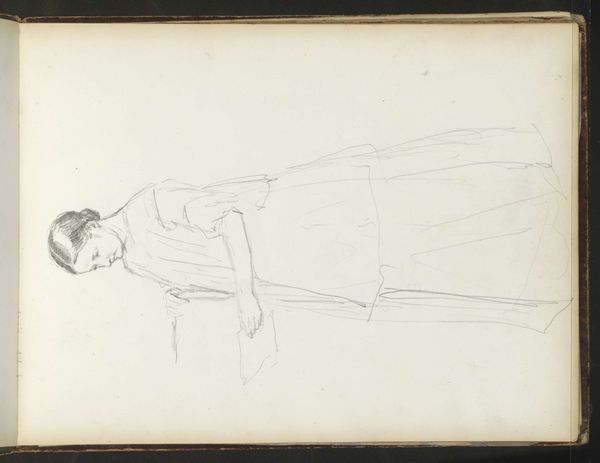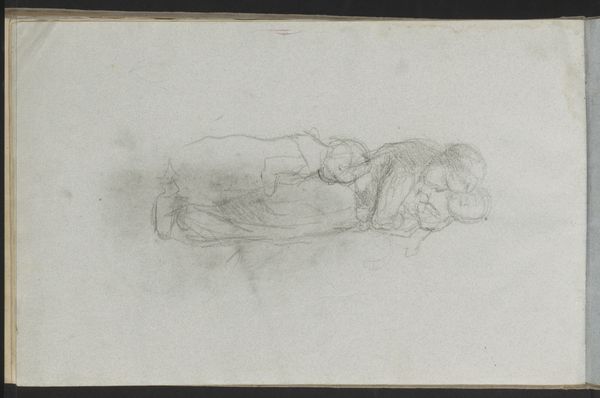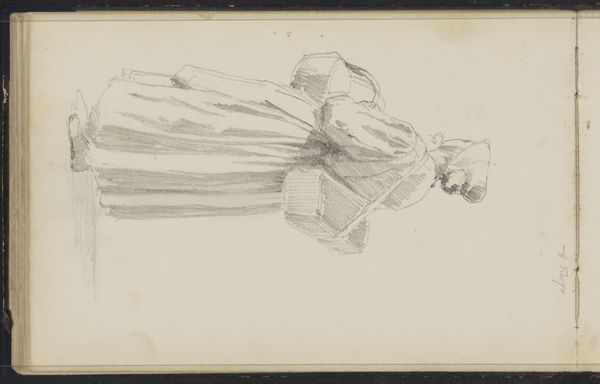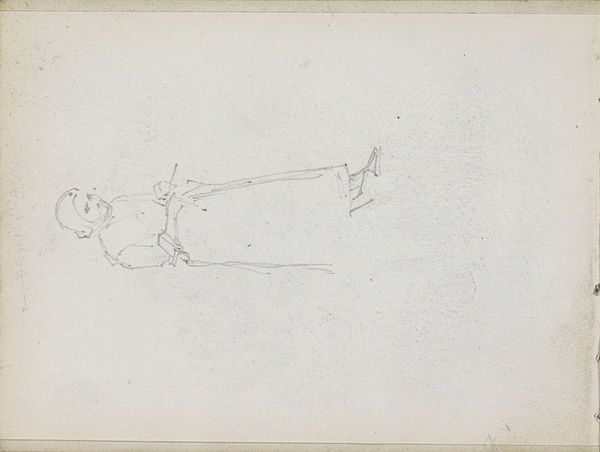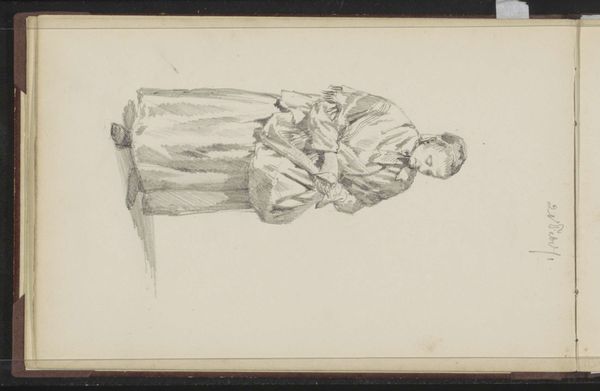
drawing, pencil
#
portrait
#
pencil drawn
#
drawing
#
pencil sketch
#
pencil
#
pencil work
#
academic-art
#
realism
Copyright: Rijks Museum: Open Domain
Curator: Let's discuss this drawing titled "Meisje met een schort om en een kapje op het hoofd" which roughly translates to "Girl with an apron and a cap on her head." It's a pencil drawing housed here at the Rijksmuseum and is attributed to Bramine Hubrecht, likely made between 1865 and 1913. Editor: My immediate impression is of a delicate study. The light touch of the pencil lends an air of humility to the subject, who seems to be almost receding into the blank paper. It’s intriguing that the work emphasizes the textures and folds of the clothing as much as the face. Curator: Precisely. It’s interesting to consider the context. During this period, women's labor, especially domestic work, was often overlooked. How does Hubrecht's choice to portray this girl challenge or reinforce societal norms around gender and labor? The material itself, the humble pencil, aligns with the subject's presumed social standing. Editor: That's a good point about the medium echoing the subject's reality. The use of readily available pencil suggests accessibility, a democratic tool accessible for rendering everyday life. There is a quiet dignity in the choice of such accessible means to portray such an ordinary subject; it subtly elevates the importance of her daily existence, but also reminds of its hard life. Curator: Definitely. The almost photographic realism in her depiction could be interpreted as a form of silent activism, highlighting the value and presence of working-class girls. Furthermore, the slight awkwardness of the pose adds to the sense of realness. It doesn't romanticize her existence, but portrays the reality of her position in society and its complex structures. Editor: And, if we look at it in terms of material availability, perhaps Hubrecht chose this medium to democratize her own practice as a woman artist at a time that certainly posed other societal constraints and material disadvantages, right? It is not to disregard all the social layers behind such decision-making. Curator: Absolutely. Considering these aspects broadens our understanding of Hubrecht’s possible intention and connects the piece to the complex intersection of class, gender, and labor. It pushes us to rethink what subjects and what social contexts matter the most and why some things might have been more favored than others. Editor: Considering the tools and choices she was making while thinking about all this context allows us to examine art with more nuance. Curator: It's true; by examining this seemingly simple sketch, we unlock deeper insights into the era's values and the role of women in shaping the art world's portrayal of labor and identity. Editor: Precisely, seeing the labor, gender and medium itself invites one to question those representations and look for answers for ourselves.
Comments
No comments
Be the first to comment and join the conversation on the ultimate creative platform.
